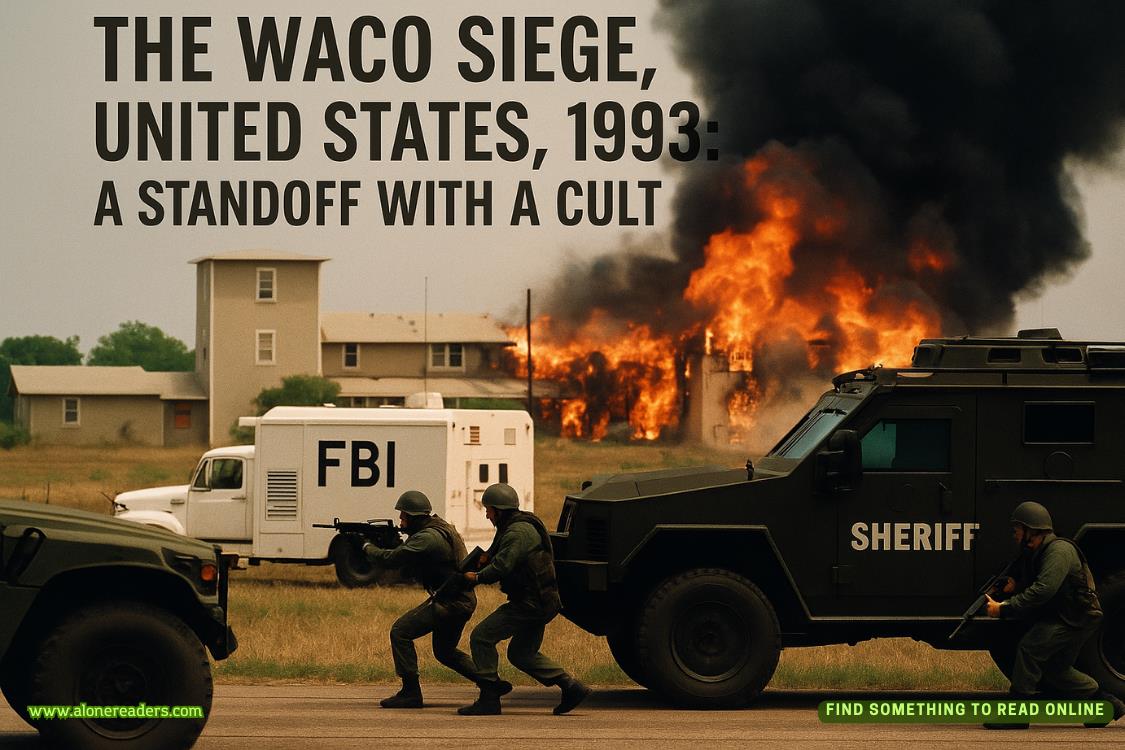Page 37 of Fated to the Dragon Alien
He would stay if he could. Sit there the rest of the cycle, guarding her from the ceiling cracking again or the Axis tracking her movements or even the wind outside if it dared blow too hard against the facility. But the mine needed him. The injured needed him. He would show up for them. Not the way the Axis wanted, but the way he knew was right.
Stavian stood slowly, checking one last time that the monitors beside Cerani’s bed stayed green. They did. Her vitalslooked stable. Safe. Only then did he touch her hair. Just once. Light. Like a promise.
“I’ll come back,” he said quietly.
He walked out, sealing the med room behind him with his security code. A guard raised a brow near the corridor, but Stavian didn’t pause. He entered the main lab. The stench hit before the door opened—burned ozone, old blood, antiseptic. Too much all at once.
Telren stood by a console, tapping her panel like nothing out of the ordinary had happened, though her white coat had a slash of grime across the sleeve. She didn’t look up.
“Status,” Stavian said.
“You want the nice version or the honest one?” she asked.
“Honest.”
“Eight miners dead. Five recovered, but critical. Fifteen more with injuries we can stabilize if the rest of the system holds. I’ve got two requiring extensive internal microbot surgeries. Otherwise, they’re offline within the cycle.”
He set his jaw. “Do the surgeries.”
“Are you sure?” she asked, finally looking up. “Their recovery time will be long. That means dedicating almost fifty percent of active resources to prisoners who—by Axis law—should have been cycled offline upon arrival.”
“Yet you kept them alive.”
Her lips twisted. “I needed your approval, but…” Her gaze shifted to the room where Cerani was recovering. “You were with the miner who’s immune to the radiation.”
“That’s right.” He straightened and flared his wings just enough to make his point. “630-I is under my personal protection.”
“Axis law—”
“At this mine, right now, I am Axis law.” He didn’t give afekwhat anyone thought about him. His veins burned with a strangekind of heat. Smoke curled from his lips, as if embers burned in his throat. “Keep the miners alive.”
Telren held his gaze for a moment, then turned back to the table. “Yes, Controller. I’ll deploy the microbots immediately. But if another shake hits, don’t expect clean outcomes.”
“There is nothing clean about this place,” he growled, and left before she could say anything else.
The corridor outside the med lab was quieter. Mechs had cleared most of the rubble. The air still vibrated faintly with the kind of tension that told him they weren’t in the clear. Not yet.
He found Darven on the command deck running a diagnostic loop at the central terminal.
“What do we know?” Stavian asked.
Darven pulled up the sector map. Several areas blinked in yellow. Two flashed red.
“We lost most of tunnel line F,” he said. “Complete shaft collapse. Luckily, it was on rest cycle. No one was inside. Tunnels B through D are impacted, but stable.”
“And sector E?”
Darven shifted his weight. “Main support columns failed. Partial ceiling collapse, backflow damage from pulse converters when the pressure valves overloaded. Unsurprising in natural-quake scenarios like this.”
Stavian moved in closer, his eyes tracking the data. “That shouldn’t have happened. There were no warnings. The tunnels should have been able to withstand a tremor like that.”
“True. Either the readings were wrong…or it was poor planning.”
Stavian locked his jaw. “Poor planning?”
Darven shrugged. “The converters in E haven’t triggered since installation. We do regular sweeps, but the mine build was rushed and corners were cut.”
Stavian’s pulse thumped in his ears. “You just saw the casualties. Miners buried alive. Half the shafts offline. This happened because of shoddy construction?”















